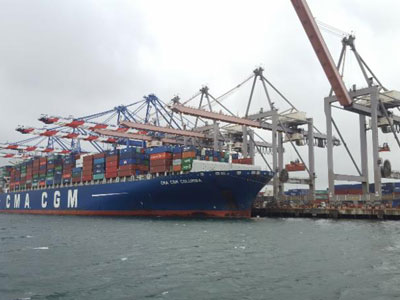

There is massive congestion at the L.A. and Long Beach ports. The latest figures from the Journal of Commerce shows 63 container ships in the harbor (34 awaiting berths and 29 at the berths). Terminals are full and dwell times have doubled. The situation isn’t good, and manufacturers, distributors and consumers are going to have to wait!
Why did this happen? Of course, these days, COVID gets blamed for most problems. Well, it is certainly partly to blame. The longshore labor force has been severely affected by COVID. Skilled equipment operators are in especially short supply according to the Pacific Maritime Association. The ports are 35% below what they normally do on deliveries to truckers with decreased productivity levels. It isn’t all about productivity. There are near-record container volumes which are expected until the spring. Demand has soared and companies have increased orders in preparation for the Chinese New Year. Thus, there is both a demand and a supply issue!
Implications: Quite clearly, products, materials, and much more will be delayed. However, with the level of congestion not expected to be alleviated until May-June, the implications will continue to build up. Global logistics systems are out of whack. These delays cause other delays. Certainly, manufacturers and distributors are impacted as well as consumers, patients, and more. Unexpected complications arise; alternatives are being pursued and long-term impacts will occur. It can impact future strategy discussions, supply chain network designs are key partnerships.
One Tip to Implement This Week:
First, get up-to-speed on the environment and assess your current situation. How will this issue impact your business? No matter what type of business or industry, there will be some sort of impact. It is certainly better to understand potential implications so that you can proactively navigate the changing business environment.
Second, reassess your immediate, medium-term and longer-term actions.
- Immediate: Should you partner with different logistics partners? Should you change your mode of transportation? What is your supplier or manufacturer doing and how will that change your situation? Have you positioned strategic inventory reserves close to your manufacturing facility or customer? Do you have backup options? Can you partner with other companies to meet your customers’ needs? Have you talked with customers? What is their situation? And the list of questions goes on.
- Short-term: Get on top of your demand and supply. The better job you do of proactively managing your supply chain based on SIOP (sales, inventory and operations planning), the more successful you’ll be. There are other strategies to upgrade your capabilities to be agile and successful with ever-changing supply chain conditions. Pursue them!
- Medium-term (which should start in the short-term): Reassess your supply chain network and your strategy. Should you re-shore, near-shore, partner or use an alternative strategy? How does your product supply strategy relate to your customers’ evolving needs?
Please keep us in the loop of your situation and questions. Also, read more about these types of ideas to navigate and successfully emerge post COVID-19 in my free eBook Future-Proofing Manufacturing & Supply Chain Post COVID-19. Please send your feedback and stories. I will incorporate into an article, video or interview.


